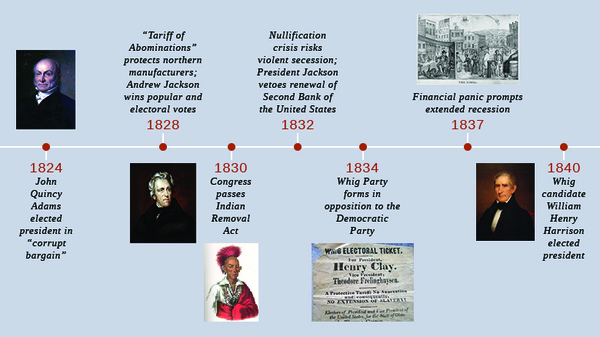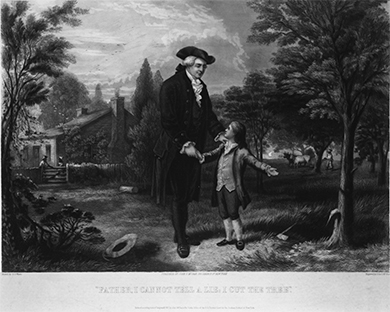| << Chapter < Page | Chapter >> Page > |

In the 1820s, American political culture gave way to the democratic urges of the citizenry. Political leaders and parties rose to popularity by championing the will of the people, pushing the country toward a future in which a wider swath of citizens gained a political voice. However, this expansion of political power was limited to white men; women, free blacks, and Indians remained—or grew increasingly—disenfranchised by the American political system.
The first party system in the United States shaped the political contest between the Federalists and the Democratic-Republicans. The Federalists, led by Washington, Hamilton, and Adams, dominated American politics in the 1790s. After the election of Thomas Jefferson—the Revolution of 1800—the Democratic-Republicans gained ascendance. The gradual decline of the Federalist Party is evident in its losses in the presidential contests that occurred between 1800 and 1820. After 1816, in which Democratic-Republican James Monroe defeated his Federalist rival Rufus King, the Federalists never ran another presidential candidate.
Before the 1820s, a code of deference had underwritten the republic’s political order. Deference was the practice of showing respect for individuals who had distinguished themselves through military accomplishments, educational attainment, business success, or family pedigree. Such individuals were members of what many Americans in the early republic agreed was a natural aristocracy. Deference shown to them dovetailed with republicanism and its emphasis on virtue, the ideal of placing the common good above narrow self-interest. Republican statesmen in the 1780s and 1790s expected and routinely received deferential treatment from others, and ordinary Americans deferred to their “social betters” as a matter of course.
For the generation who lived through the American Revolution, for instance, George Washington epitomized republican virtue, entitling him to great deference from his countrymen. His judgment and decisions were considered beyond reproach. An Anglican minister named Mason Locke Weems wrote the classic tale of Washington’s unimpeachable virtue in his 1800 book, The Life of Washington . Generations of nineteenth-century American children read its fictional story of a youthful Washington chopping down one of his father’s cherry trees and, when confronted by his father, confessing: “I cannot tell a lie” ( [link] ). The story spoke to Washington’s unflinching honesty and integrity, encouraging readers to remember the deference owed to such towering national figures.


Notification Switch
Would you like to follow the 'U.s. history' conversation and receive update notifications?